| Architect |
Henrik Schmahl |
| Date Built |
1909 |
| Location |
Kossuth Lajos St and Petőfi Sándor u - Franciscan Square |
| Description |
|
This amazing building occupies
a site at the corner of Kossuth Lajos St
and Petőfi Sándor u and the corner looks
out onto Franciscan Square. It was
commissioned by the Budapest City Savings
Bank and designed by the German architect
Henrik Schmahl. The date above the
entrance is 1909, but it appears that it
may have actually been completed circa
1912, after Schmahl had died.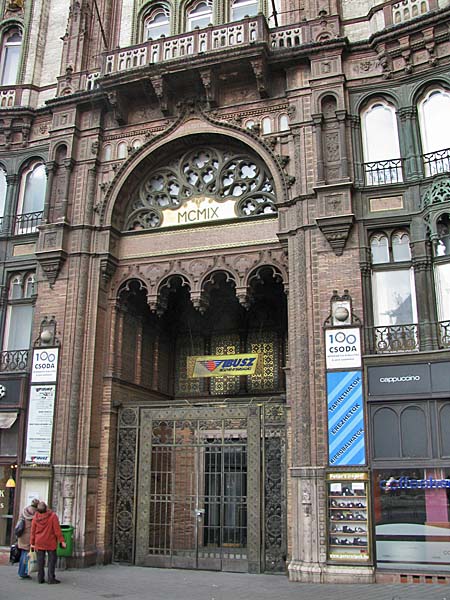 In researching this building I have had to rely on Google translations of Hungarian information and the end result is a translation that copes well with vocabulary but struggles with grammar. So, I hope that I have understood the information correctly and I apologise in advance for any errors. The building appears to be called the Brudern House, although I’m not clear if that is its name or the name of the building it replaced. The trapezoidal building was and is multi-functional with flats on the upper floors, shops at street level and offices in between. The jewel in the crown though is the Parizi Udvar - Paris Arcade - a Y-shaped shopping arcade with a crystal vaulted roof. The arcade features stained glass by Roth Miksa and a decorative mosaic floor by Villeroy and Boch.  The building has a reinforced concrete structure with a variety of pillars being used in different areas, these include cast iron, concrete and brick. The facade is white render with yellow and green majolica decoration, from the Zsolnay factory. The majolica decoration includes mythological figures and busts of both men and women appearing to look out of portals arranged in a line around the building. 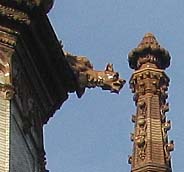 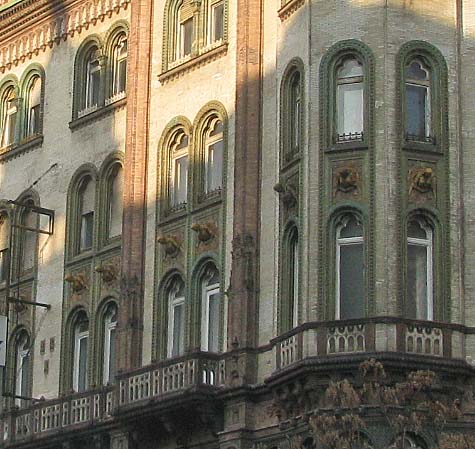 At the top of the corner facade a pair of pinacle towers frame a semi-circular pediment containing a clock within a bas-relief sculpture. 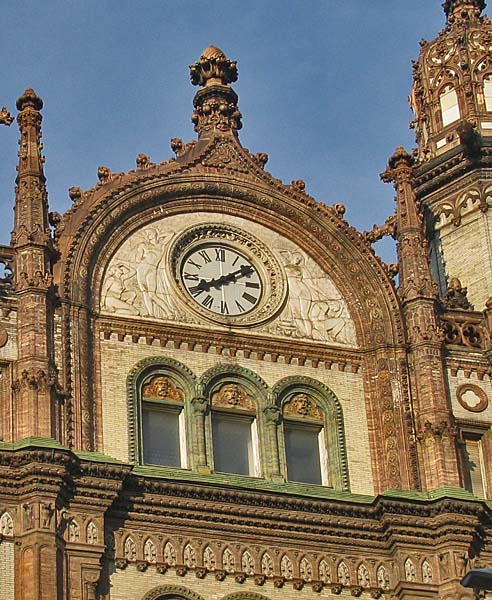 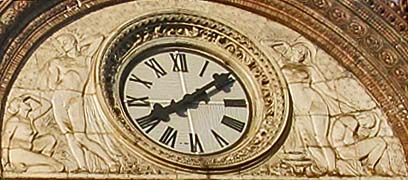 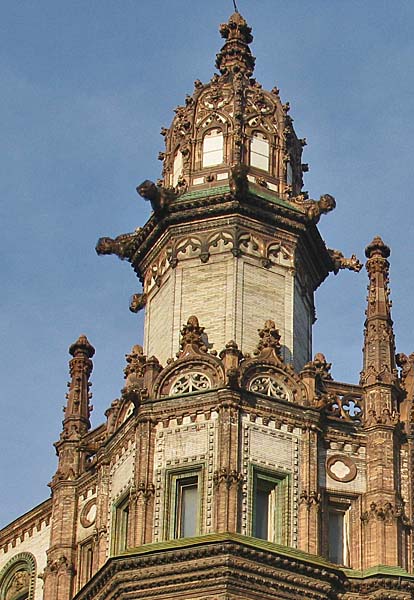 If I understand the translation, it appears that the building has fallen into a state of disrepair that is concerning and, as with other older buildings in the city. a plan was being mooted to convert it into a hotel, as was the Gresham Palace. However, this plan was first thwarted by disagreements between the owners of various elements of the building and then halted by the economic downturn. As a result the building sits in a state of limbo and many of the shops along the street and in the arcade are closed. |
|
|
Brudern
House, Budapest, Hungary
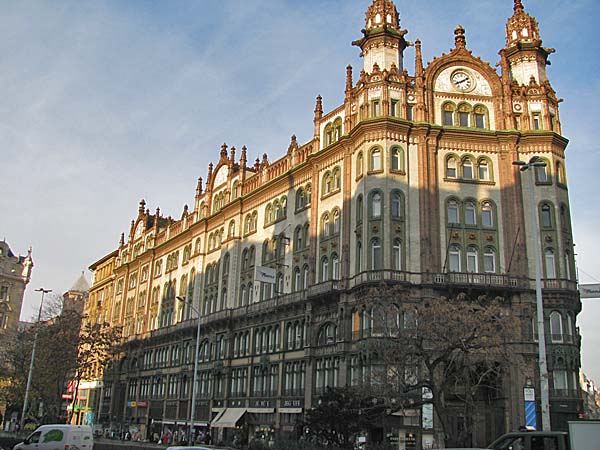 Close Window  |